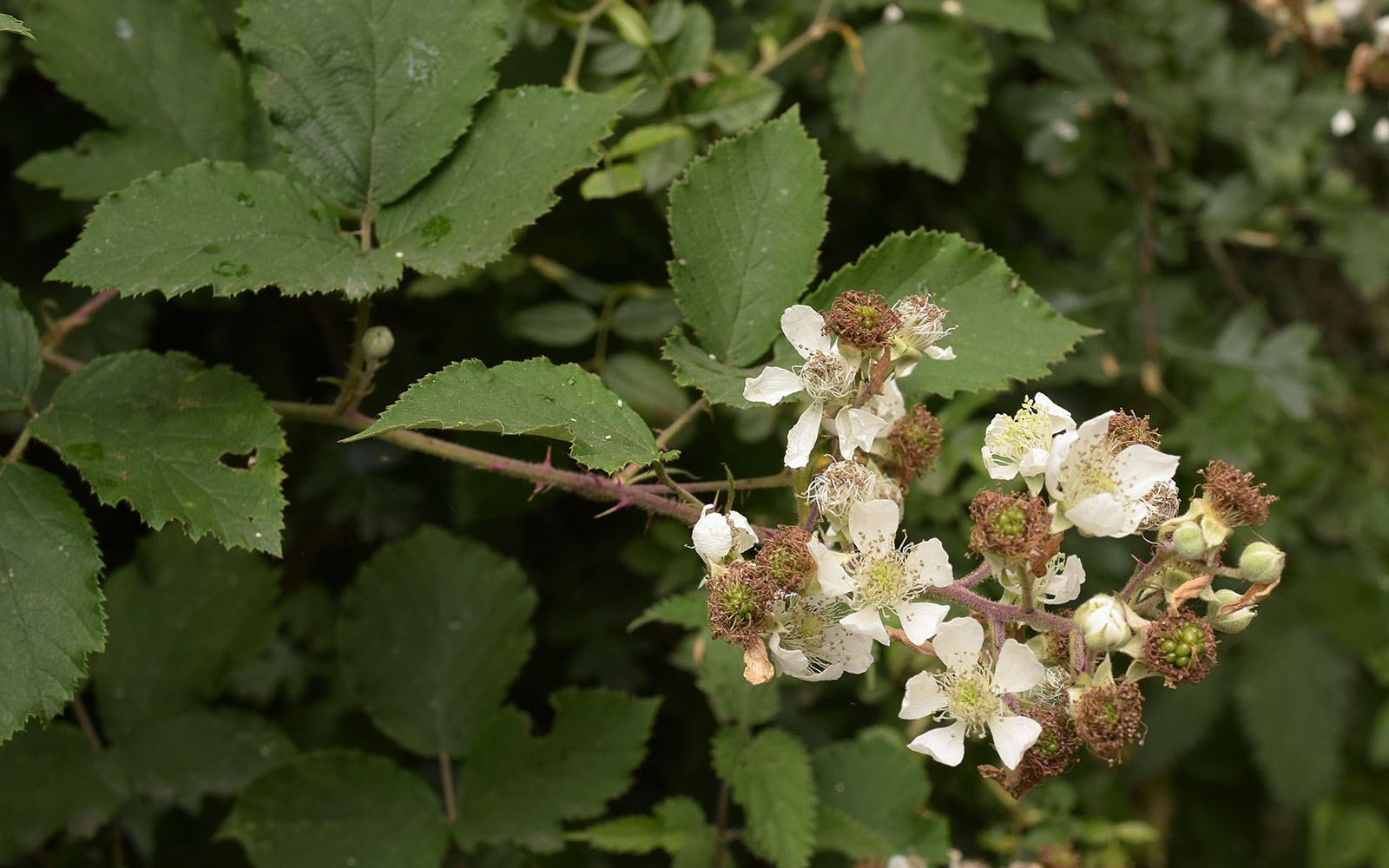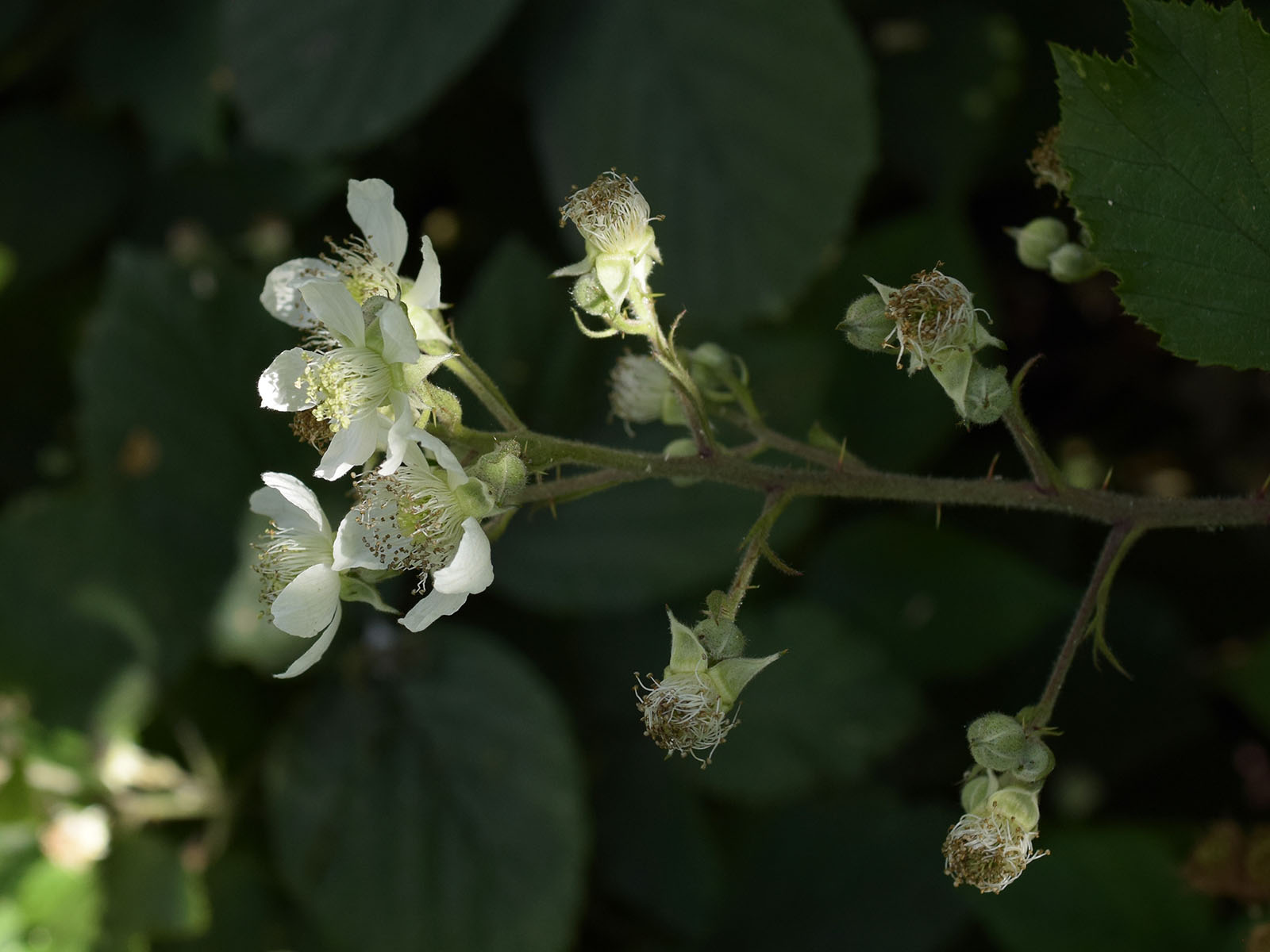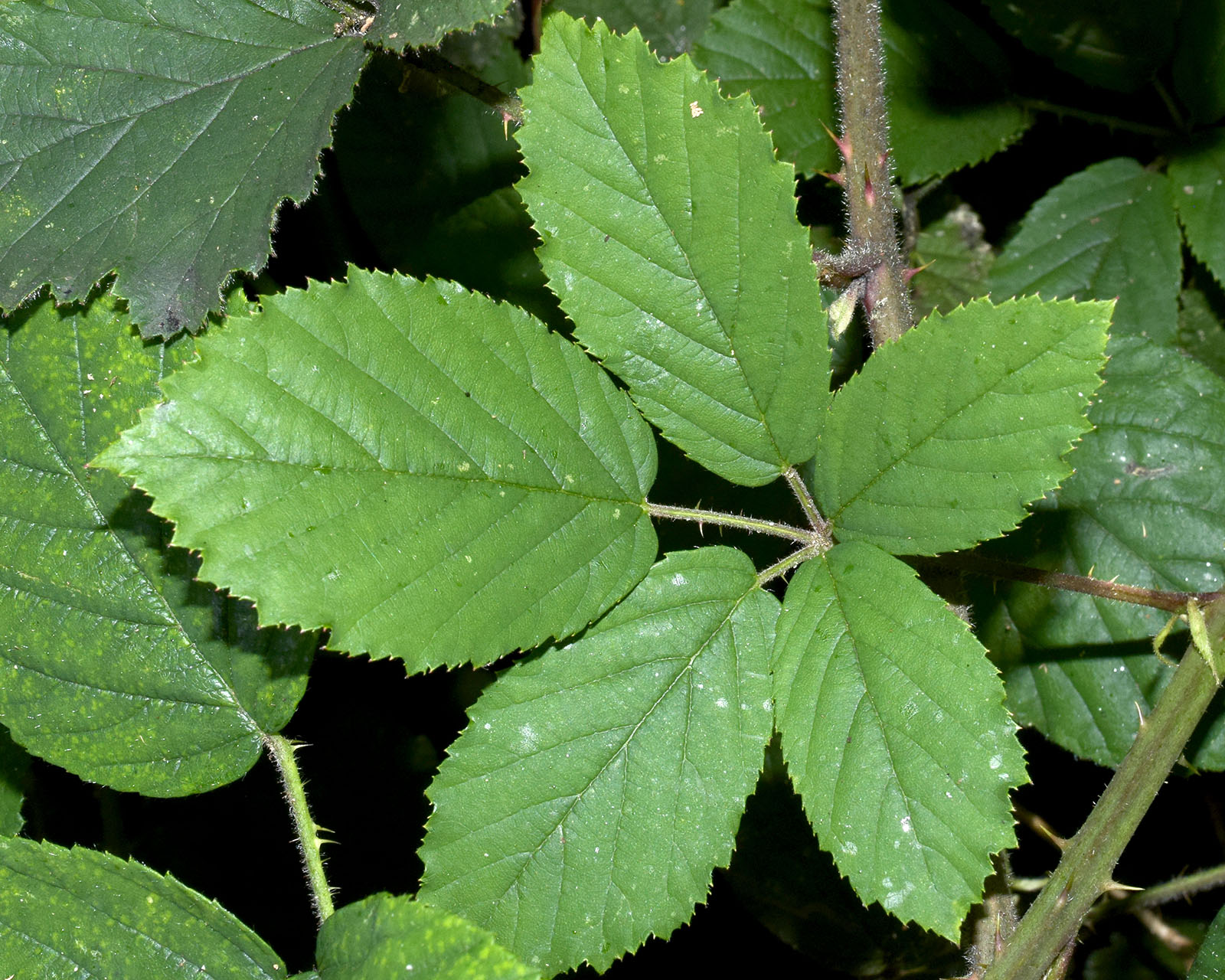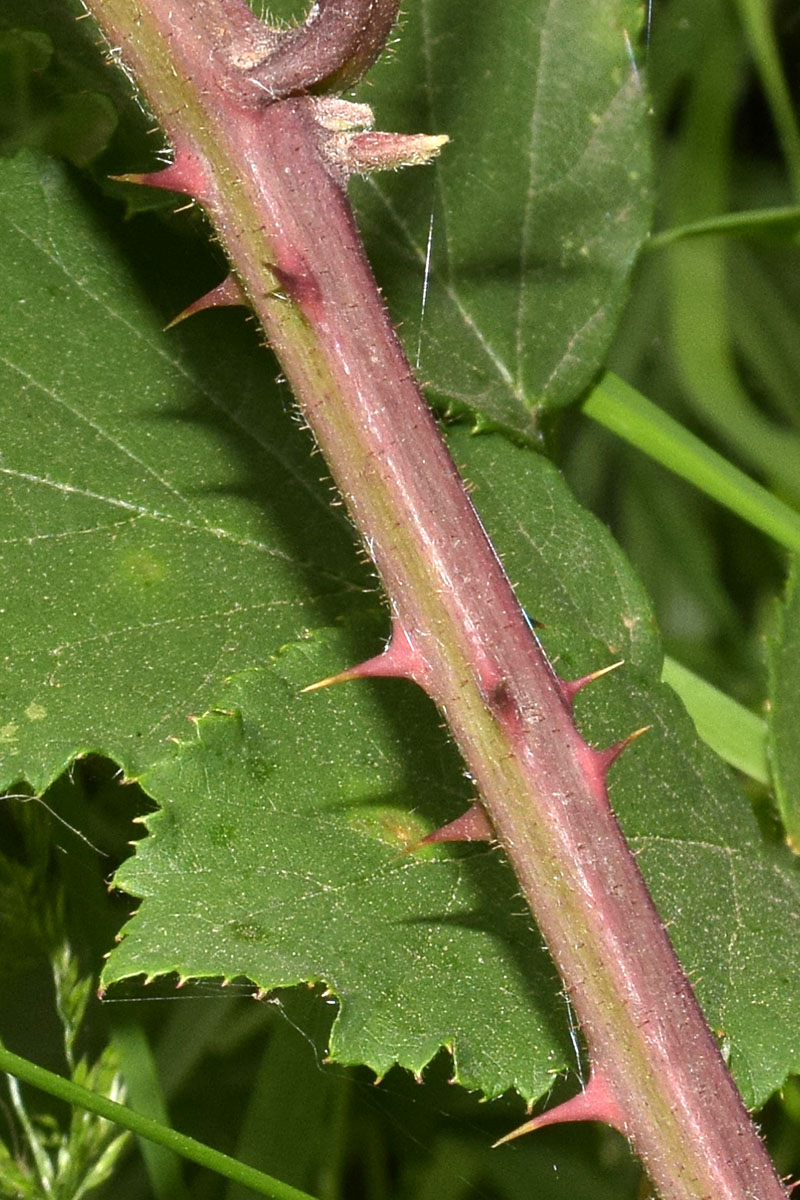
Rubus percrispus – Series SERIES
back to Alphabetical index · Taxonomic index
A white-flowered bramble with distinctive sharply serrate crisped leaflets which are dull green above but almost white below. It was first recognised as a distinctive species from the Colchester area in Essex where it was collected in the early 1970s, and later independently recorded around north Somerset and Gloucestershire by Rob Randall and in south Hampshire and Jersey by David Allen. It was eventually named by Randall and Allen as Rubus percrispus and described in 1994 in a Watsonia paper by David Allen. Historical collections have also come to light and its known British distribution now also stretches as far as Devon, Norfolk, Cardigan and two localities in Ireland. It is a medium-arching species, not usually exceeding a metre in height, preferring to grow on sandy or gravelly soils in hedgerows, woodland rides and scrub.

The flowering panicle is narrowly pyramidal in shape, with 3-foliolate leaves below and a terminal inflorescence which is fairly small and open or moderately compact, consisting of about 20 flowers, each 2-2.5 cm diameter. The rachis is felted above with abundant, conspicuous short-stalked glands throughout. A few small fine prickles may occur in the main head of flowers, but several long declining ones are usually present in the leafy section.



The petals usually appear pure white, but the published description mentions that they are faintly mauve or lilac in bud. Petals are broadly elliptical to obovate, somewhat abruptly narrowed to the base (clawed) and often shallowly notched or erose at the tip. The measurements are given as 8-17 x 5-9 mm, but they probably average c.12-13 x 7-8mm. Stamens are longer than the styles, which are green or yellowish. The carpels are glabrous and the receptacle has some hairs at the base. Sepals are felted, short to medium-pointed and strongly reflexed, with scattered short-stalked glands.


Leaves have 3-5 leaflets, the terminal leaflet 5-8 x 4-5cm, ovate to obovate, often with a broadly acuminate or undifferentiated apex and an emarginate base. Leaflets are more or less glabrous above, dull or dark green and have strongly undulate, 'crisped' margins. The toothing is compoundly serrate, with teeth often curved in different orientations; fine, sharp points on the teeth almost give the impression that the margins of the leaflets is spiny.


Trifoliate leaves with budding basal leaflets:


Leaflets are pale whitish-green below.


The first-year stem is rather sharply angled with furrowed sides, turning red or eventually dark purple in sunny situations. It may be thinly hairy or glabrescent, sometimes pruinose. Prickles are frequent, mostly confined to the angles, straight or slightly curved, almost patent or slightly downturned, mostly about equal to the stem width. A few pricklets may occur, but the stem has more frequent small acicles and stalked glands, which vary in size.


